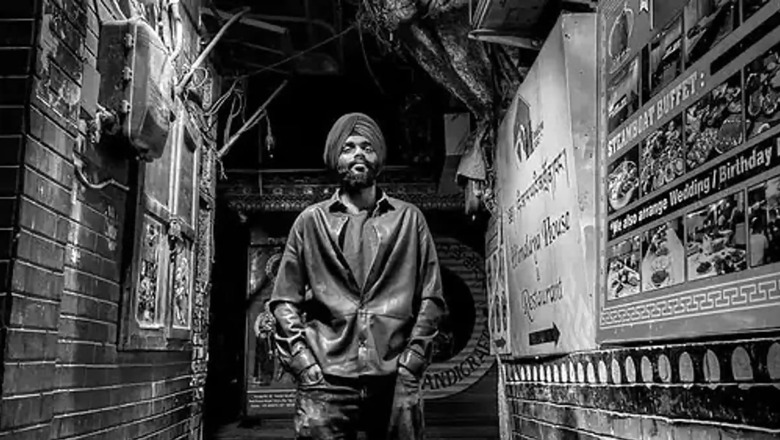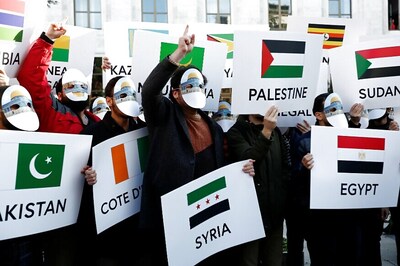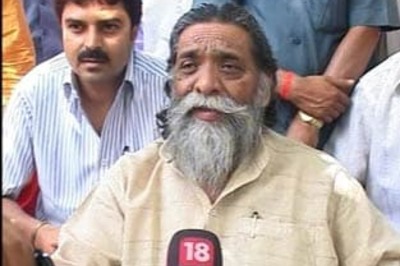
views
Jasdeep Singh, famously known as Burrah, shares his inspiring journey, from regional singing competitions to being featured on MTV Hustle Season 3 and Spotify’s RADAR programme. He discusses how his diverse musical influences, including hip-hop, Punjabi pop, and global icons, have shaped his unique sound. Burrah also reflects on the evolving landscape of Punjabi music and his dreams of taking it to the global stage in this exclusive chat with News18.com.
View this post on Instagram
Excerpts from the interview:
Could you describe how you went from competing in regional singing competitions to being on MTV Hustle Season 3 and finally joining Spotify’s RADAR programme? What impact has this trip had on your musical career?
In the last interview, I mentioned whether language is a barrier. I talked about how, when you’re on a show like MTV Hustle, there is a certain perception the audience has. There’s a slight mismatch in perception, but it’s a beautiful aspect of the hustle.
I felt there was more depth in storytelling, and people saw me primarily in the hip-hop mould. As I progressed beyond Hustle, I realised that while I enjoy listening to hip-hop, I grew up with a mix of pop, soul, and hip-hop. My dad introduced me to ABBA and the Bee Gees, and I listened to a lot of Gurbani. I was also a huge fan of Punjabi pop artists like Babbu Maan and Daler Mehndi.
I realised my musical spectrum is much broader than what was shown in the competition. This understanding deepened as I worked on my new album and released new songs outside of the show. When my first song gained coverage, I felt more satisfied, as it reflected a more authentic version of myself.
I have gained more clarity in my artistic journey and evolution. People will learn more about me as I continue to evolve. Now, I am happy and satisfied with my style, striking a more authentic chord with myself.
How do you strike a balance between attempting to appeal to a larger, maybe global audience and preserving your distinct Punjabi musical identity?
I am a fan of Michael Jackson and listen to his music, especially his Earth song, every day. Some sounds have a deep-rooted, universal appeal, and beyond that, there is energy. When an artist stands with a mic or creates a song, their eyes and the audience intuitively understand all the rules. I truly believe that if music comes from the heart and soul, is well-intended, and comes from a place of love, it resonates with others.
For me, being genuine is more important than fitting into a specific mould. That’s what I’m currently focusing on. As I move forward, I will retain the essence of Punjabi sounds but experiment with them so much that people will recognise and say, “This is a Punjabi song.”
Punjabi musicians have had a big impact on the world music landscape. What does it feel like to be a part of a musical legacy that includes some of the world’s most popular exports from India?
Honestly, I am grateful to be able to do this. It’s a dream come true to make Punjabi music and be considered part of this lineage. I come from a very small home, and as a child, I used to ride a scooter with my whole family. Growing up, I listened to Dilir Manbeeb and Gurudas Maan Sahab. Seeing Gurudas Maan Sahab pass the baton to Diljit Bhai, and watching Diljit Sir grow into what he is today, has been inspiring. Listening to Sukhbir in recent years has also been influential.
I have had these idols in my heart, but I also have international idols, like Kendrick Lamar, Dave Chappelle. Though he is not from a musical background, he represents cultural impact. I often think about how, musically, I am rooted in my Punjabi heritage. I wonder how Punjabi music and arts can evolve, become more diverse, and reach a universal audience. So, I am both grateful and optimistic. I am in a phase of absorption and experimentation, trying to establish this vision.
View this post on Instagram
What are your expectations for Punjabi music’s future on the international scene, given that platforms like Spotify are making it simpler for local artists to get noticed by audiences throughout the world?
Let me share a very personal dream with you. Artists often get vivid visuals, and I had one where I saw myself wearing my school uniform at the Grammy Awards. I stood there, in my school uniform as a costume, and won my first Grammy for Best Record of the Year. I was elated.
In my post-award speech, I would acknowledge those who have been part of my journey and emphasise that Punjabis are not a stereotype; we represent an international culture. This is my dream, and I have visualised it clearly.
Punjabi music is more than just a way to promote or cope with material things. It encompasses folklore and stories that we can blend to create a legacy. From Guru Nanak Dev Ji to the present, we are a warrior race committed to truth, and this legacy should be reflected in our art. My goal is to invite this truth into our art and showcase our culture to the world.
I have big dreams. I aim to make a mark at the Grammys and create movies that compete for Oscars. My heart is set on working for Punjabi arts, to do so much that we can all reach these heights. Every day is an affirmation for me, inspired by Diljit Paaji. Diljit is opening doors, and by next year, he will be Grammy-nominated. This progress makes me happy and motivates me to work harder.
Imagine a stadium with over a million people, including 120 Punjabi artists. If I am there, it will be incredible. I truly wish to get there one day. It’s all a matter of time, and I believe it will happen.
What guidance would you provide aspiring Punjabi musicians hoping to establish themselves in the music business? How can they take advantage of programmes such as RADAR?
When a person passionately creates something for themselves, gets excited, and uploads it, platforms like Spotify and their partners often notice and amplify these voices. The key is to just go for it and show the side of yourself that you are most afraid to reveal. Personally, I was hesitant to share my passionate, emotional, or spiritual side. But now, thanks to RADAR and this opportunity, I can talk about and amplify this part of myself. You need to show the side of you that you fear the most, even if it has been rejected before, because that is your true goal. That’s what I believe should happen.
Meanwhile, RADAR, Spotify’s global emerging artist programme, has completed three years in India and has entered into its successful fourth year this year. RADAR has been spotlighting rising talent in music across 25+ regions where Spotify is available and hence, this year Spotify is bringing on popular artists such as OAFF and Savera, Hansika Pareek, Swastik The Band, RANJ x Clifr, Boys from Mars, Samad Khan, Burrah and more. We wish to highlight RADAR’s contribution in providing a platform for these budding artists to create their own fan base and online community across the globe. Spotify is also responsible for deepening the connection between local artists and listeners.
“Punjabi music listeners are among those who spend the most amount of time on Spotify in India, and we have seen tremendous growth in the consumption of this language, year-on-year. With dedicated emerging artist programmes for Punjabi artists, including RADAR and Fresh Finds, our intent is to provide these artists with a platform, help them grow, and put a spotlight on Punjabi music,” says Dhruvank Vaidya, Head of Music and Podcast, Spotify India.
“We’re also celebrating four years of RADAR in India this year, and hope to enable more artists to find their audience and showcase their talent through this programme,” he he added.


















Comments
0 comment